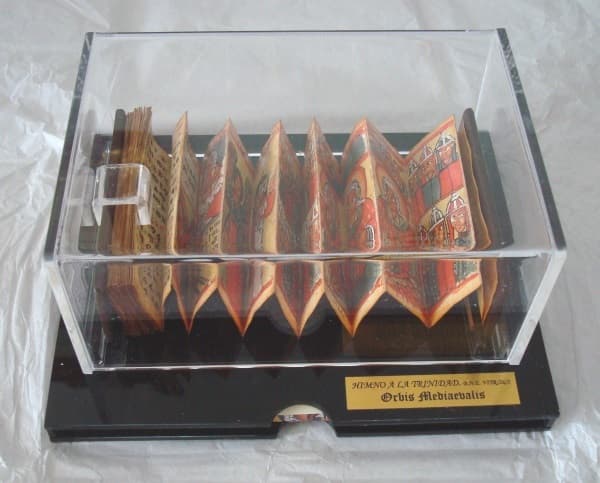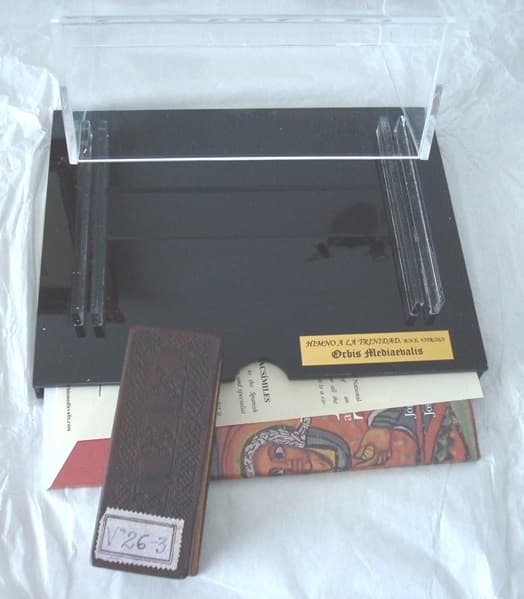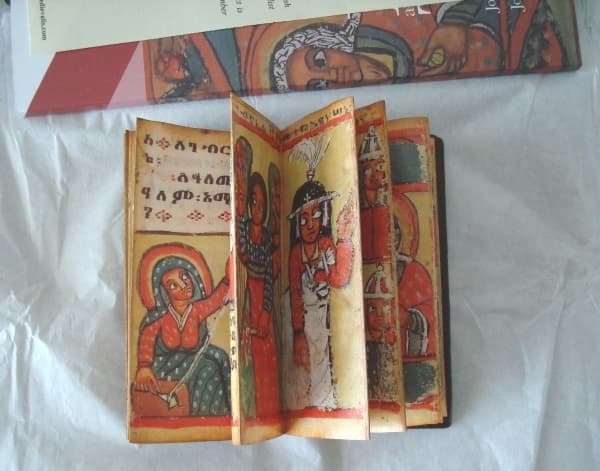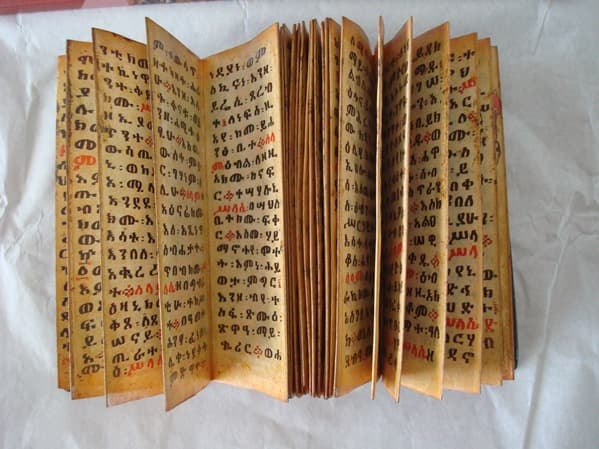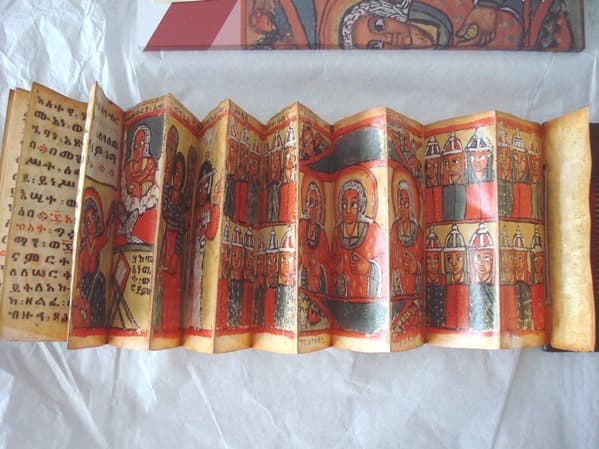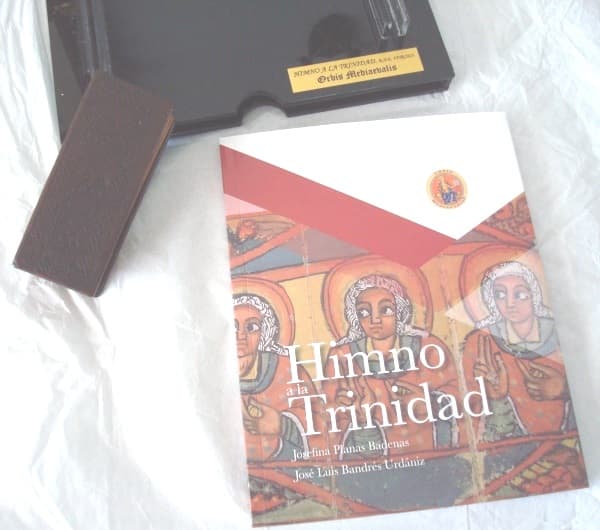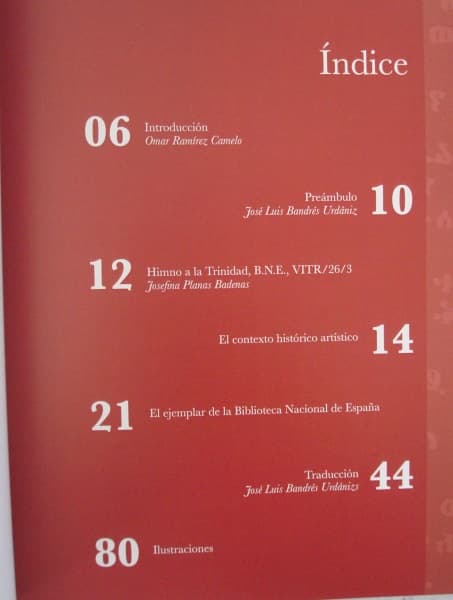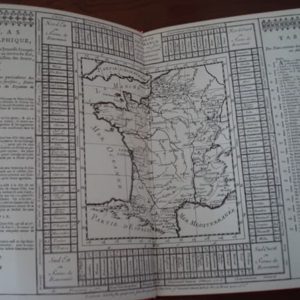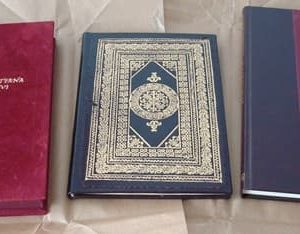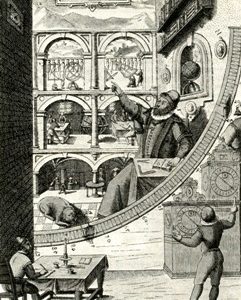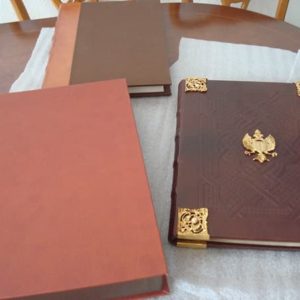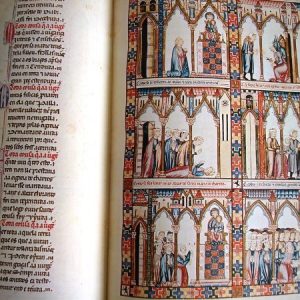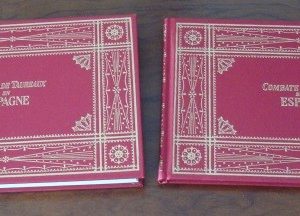Description
Extraordinary and rare facsimile edition of a 16th century Ethiopian codex, Hymn to the Trinity, whose original is kept in the National Library of Spain with the symbol VIT / 26/3, made in 2020 in a single edition, numbered with notarial deed and limited to just 200 copies.
Facsimile bound in brown leather with dry prints, mini format of 4 x 10 x 3 cm, 20 folded accordion sheets. Written in Ge’ez language (classical Ethiopian). Illuminated with brightly colored miniatures representing the Annunciation, the Trinity and the Elders of the Apocalypse.
Presented in a beautiful methacrylate display so that the different pages can be seen in their extended accordion format. Format 20.5 x 16 x 10 cm. In its lower part it has a hole where to keep the study book and the notarial deed.
With a special complementary study book that includes the Spanish translation of the text in the classic Ethiopian language. Illustrated paperback with flaps, format 15.1 x 19 cm. 80 color illustrated pages.
In the 11th century, Europe was convinced of the existence in the Far East of a Christian kingdom located in what would have been the lands of the Magi. The advance of Islam and the spirit of the Crusades made European rulers want to find him to make him the ally they needed to end Muslim rule.
However, it was not until the fourteenth century when they managed to identify it with what was then called Ethiopia or Abyssinia, a Christian kingdom of monophysite rite whose emperors considered themselves descendants of the queen of Sheba.
Ethiopia was one of the oldest states in the world and the second to adopt Christianity. The relationships he established over the centuries with Byzantium, the Middle East, Europe and Africa led him to develop a unique and incredibly original civilization, with a rich culture that was the fruit of the most complex and contradictory influences.
On church walls, as well as on manuscript pages, used primarily to capture sacred themes, a genuine style of painting developed, impossible to confuse with that of any other region in the world.
At the end of the 15th century the sänsul appeared, also called the accordion book. The oldest specimens usually belong to a production intended to supply the spiritual needs of the Ethiopian elite.
The sänsul or folding book, kept in the National Library of Spain, VITR / 26/3, is an excellent example of Ethiopian lighting, classified as naif. It is characterized by a stereotypical and simplified representation of the human body, the brightly colored palette and the large, almond-shaped eyes of its figures.
The iconographic cycle of this fascinating specimen opens with the Annunciation. This image gives way to a vision of the Holy Trinity. Between both scenes a female figure, elegantly dressed, is inserted. The wardrobe indicates that it belongs to royalty; hence it can be identified with the donor. The four living creatures (man, lion, ox and eagle) decorate the ends of the Trinity. Finally, two symmetrical groups corresponding to the Elders of the Apocalypse close this imposing composition.
The fascinating miniatures that decorate the pages of this charming codex are a true reflection of the pride of a unique and ancient people.
A poem of praise to the Holy Trinity copied in Ge’ez, the Ethiopian sacred language, composes the main text of the codex. In addition, different prayers and a praise to the popular saint Ghebre Menfes Quedus complete it.
Through the copy preserved in the National Library of Spain you will learn the art of writing, illustrating and binding manuscript books from one of the oldest states in the world, with a magical and genuine lifestyle that even today, in many churches and monasteries, the traditional methods of such admired art are still used.
Complete copy and in perfect condition, special to give away or for oneself. Very decorative anywhere in your home or office.
Shipping by the buyer, upon request and destination. Ask us any questions and facsimile or any other item he seeks.




